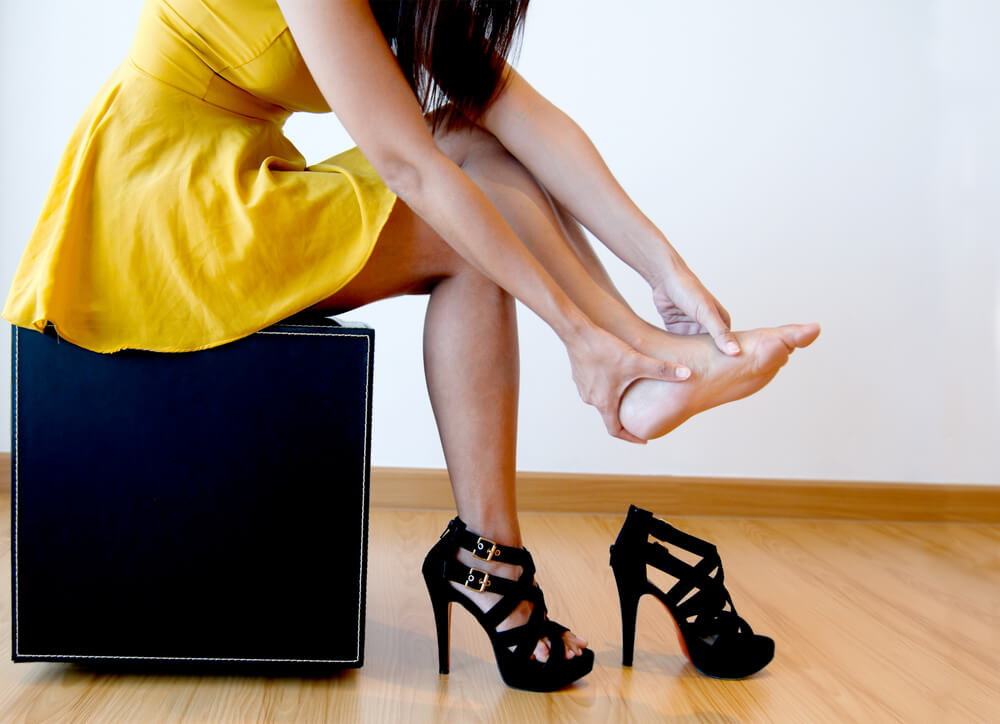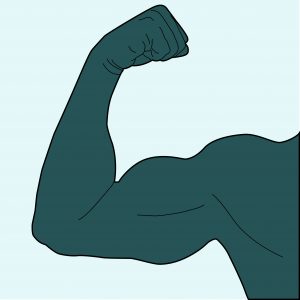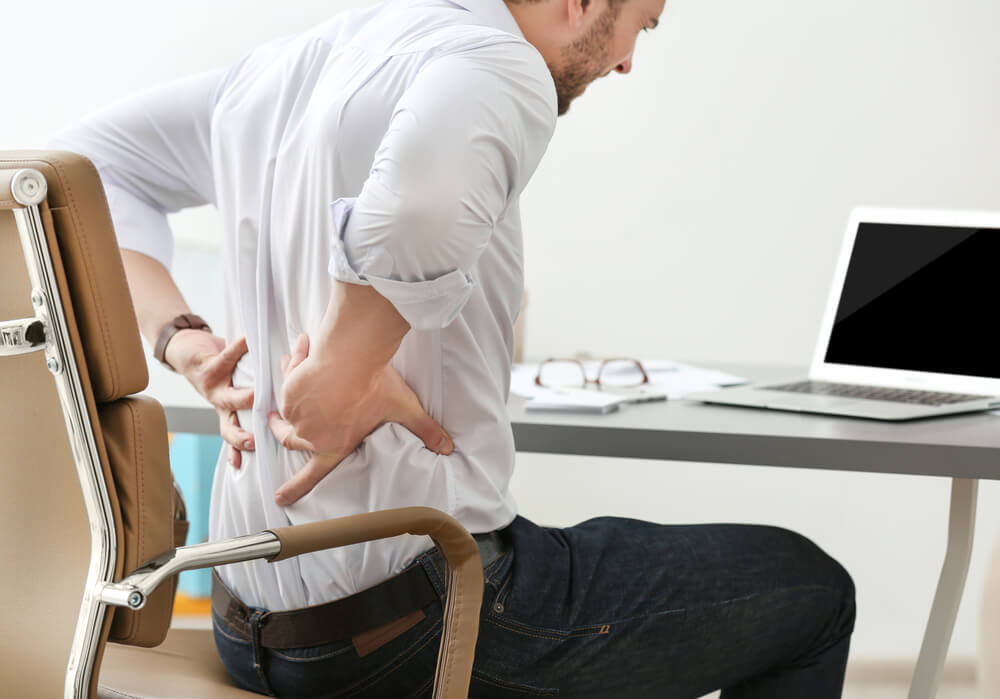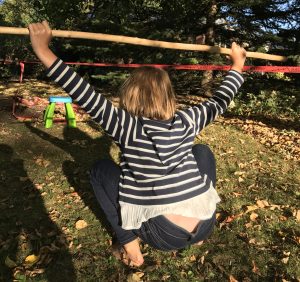Should kids wear shoes or be barefoot? Why are kids wearing high heels?
When I talk about kids wearing high heels, I’m not talking about lady’s pumps. Have you ever stopped to have a look at shoes that we wear these days? They usually have a heel that is elevated compared to the rest of the shoe. What does this actually do to the child’s body?
Unfortunately, I was first aware of this much later in my academic training and after the birth of my first child. I read Born to Run. I started following Daniel Lieberman’s work on the evolution of endurance/persistent hunting. The logic of spending more time barefoot took me a while, just like it took a while to remove my fears around the pervasive low fat diet (see Why do you eat so much fat?).
It’s no surprise that I see patients with low back pain. Part of my assessment is to ask them to remove their shoes and observe from head to toe, check all their ranges of motion, do special neuromuscular tests, and, if applicable, take x-rays. What I often didn’t bother checking were the shoes that the individual spent most of their time wearing — especially kids, who we expect to be perfectly malleable and resistant to the woes of modern life, such as shoes and sitting.
What Shoes Do To Our Bodies
For example, kids have the innate ability to perform an overhead squat. The prerequisites for this movement require full shoulder, back, hip, knee and ankle mobility.
I have personally noted that children start to lose this ability somewhere between Grade 1 and 2. This is the time when we learn the habit of sitting quietly. When asked to perform a squat, they begin to elevate their heels as they get lower into the squat position. They also start changing the way they run, as they start depending on the big, soft, cushioned heel.
When you elevate the heel of the shoe, you force your body into a forward head posture position. The bowling ball sitting on top of your neck (your head) pulls you forward. You end up compensating by arching (compressing and tightening) your low back.
High heels tend to accentuate your calves, buttock muscles, and elevate your chest. This is a great mating strategy in the animal kingdom, but tends to crush your body over time.
 That accentuation equals shortening and tightening of tissues, primarily the back part/posterior chain of your body. Wearing heeled footwear systematically shortens and tightens the following structures: fascia under your feet (plantar aspect), Achilles tendon, calf muscles, hamstrings, gluteals, and low back. This is why the kids lose the ability to keep their heels on the ground when they squat.
That accentuation equals shortening and tightening of tissues, primarily the back part/posterior chain of your body. Wearing heeled footwear systematically shortens and tightens the following structures: fascia under your feet (plantar aspect), Achilles tendon, calf muscles, hamstrings, gluteals, and low back. This is why the kids lose the ability to keep their heels on the ground when they squat.
Prolonged sitting also shortens the superficial calf muscles since they cross the knee. It also creates ‘gluteus amnesia’ due to reciprocal inhibition. Your muscles in your groin get short and tight as you lose the ability to activate your buttocks muscles.
 For example, if you perform a bicep curl, i.e. bring a glass of wine to your mouth, your triceps must shut off or become inhibited to allow that range of motion.
For example, if you perform a bicep curl, i.e. bring a glass of wine to your mouth, your triceps must shut off or become inhibited to allow that range of motion.
The same thing happens when we sit and keep our knees bent and hips flexed. The muscles in our groin, that bring your knee towards your chest, are short and tight, while our gluteal muscles are turned off.
The muscles in the front of your hip are attached to our low back (from the front) and create more tension and tightness in our low back area. The gluteal muscles are one of the most important stabilizers of the spine. We also lose the ability to create torque in our pelvis, which is also an important factor in keeping our pelvis and spine stable.

So what is a good shoe?
Keeping the sole of the shoe as flat as possible is key. The other point you want to see is a wide toe box. When the toe box is narrow you end up compressing the toes (think of the traditional chinese wrapping of feet).
When you stand with your hands at your side, relaxed, you should have space in your fingers. This is also the case for the toes. The fact that your feet has been casted — in my case, for over 30 years — denotes the lack of space.
Most shoes also have a very stiff and thick sole which limit the mobility of the foot. We have twenty six bones and thirty three moveable joints in the foot and they become casted or glued together by wearing stiff, narrow-heeled shoes. In my quest to find the perfect shoe I came across this website The Foot Collective. I have joined this group as one of their educators and this is where I purchase shoes. Check them out at https://tfc-shop.com/ and use my discount code: dan10%
How about no shoes?
I have a rule at my house that no shoes are allowed inside or outside, around our property. Being barefoot as much as possible mitigates many of the issues associated with shoes, even if they have to be worn. Comments and odd looks from family, friends, and neighbors are common, until a bit of education is shared.
It is my opinion that if most parents knew that they were part of the problem, they would be very open to creating a ripple in social norms.
Social Norms
I was recently asked to speak at an Exercise is Medicine Symposium at the University of Guelph and one of the question was: ‘What are the barriers to my recommendations of limiting seated posture and shoe selection?’
My response had two parts: status quo and habit. It is often difficult to be ‘that guy’. We are trained to follow the path of least societal resistance. It takes a bit of effort to be different and break from the crowd.
I have spent much of my clinic time trying to educate and minimize pain and discomfort. I realized that my greatest impact would be to educate parents, teachers, and decision makers about how we keep kids healthy through simple prevention strategies, like avoiding sitting and heeled footwear.
Please talk to a qualified and experienced health care provider if you plan on trying to remove your shoes. You will find that having your foot casted with high heels, as well as stiff and narrow toe boxes, will change the structure and function of your foot. It will take some time and coaching for this to take place safely.
References
Check out Dr. Dan’s Guelph Natural Health Instagram account here for more posts related to healthy living.














